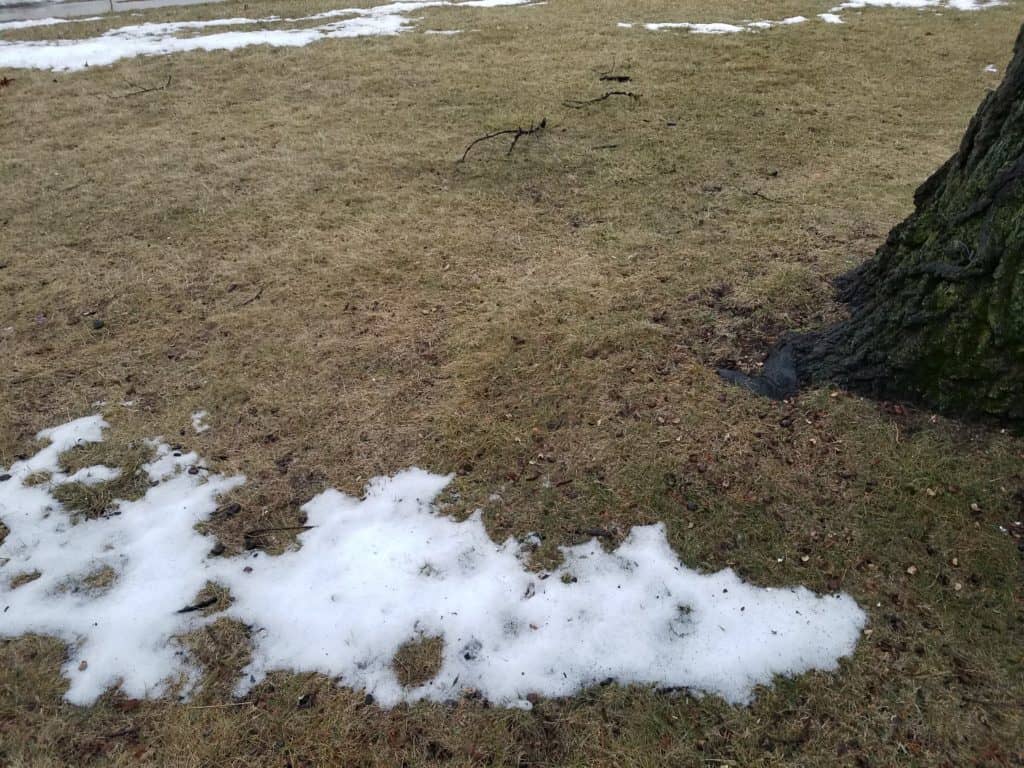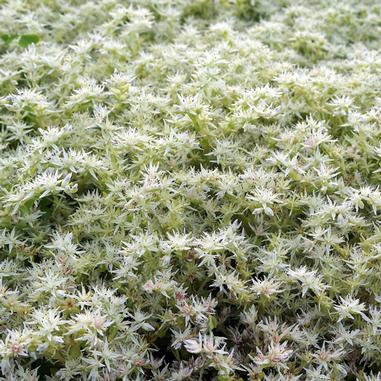
Like the receding tides, the snow melted to reveal a bruised and battered landscape. The frozen ground couldn’t possibly absorb the melting snow and unseasonable rain, making for quite a soggy mess. February is a fickle lass indeed, but she has given us our first peek at the landscape below.
Winter can absolutely take a toll on our lawns and gardens, with the former taking the brunt of winter’s fury. Once Spring arrives and temperatures level out, we will know exactly what we’re dealing with, but it’s almost guaranteed we’ll experience some winter damage, so here’s what to look for, and how to correct:
Salt Damage
Salt damaged turf along driveways, sidewalks, and roads appears brown, burnt, and dead. Salt is used as a deicing material and often affects the surrounding turf and soil. As snow melts and Spring rains arrive, the salt is generally diluted and leaches through the soil to a level below the root zone, making reseeding and overseeding possible. If Spring rains are sparse, it is sometimes recommended that you flood the affected areas with a hose to further dilute the salt, lowering the salt content of the soil to an acceptable level. Some even suggest spreading gypsum or limestone in an effort to return balance to the soil. Unfortunately, there are no effective preventative measures, other than to stop using salt altogether.
Snow Mold
Snow mold is a fungus caused by extended periods of snow-covered turf. There are two different types, gray (Typhula blight) and pink (Fusarium patch) with the latter being more destructive. Circular patches of crusty, matted grass are highly visible in affected areas. They can be as small as two inches in diameter up to several feet, with overlapping circles. Fortunately, gray snow mold is fairly innocuous and will disappear as conditions dry. Pink snow mold is more nefarious and can destroy the roots and crowns of the lawn. Raking should be performed to break the crust, and reseeding and overseeding may be necessary. In an effort to prevent snow mold, mowing should continue in the Fall until the grass has gone dormant and thatch should be managed with proper aerating.
Vole Damage
Often mistaken for the carnivorous mole, voles are herbivores that tend to be quite busy in winter, dining on grass blades, and creating winding trails of damaged grass. Snow provides the perfect cover for voles to traverse the landscape, hidden from predators as they scavenge above ground. Vole damage is mostly superficial, although the scarring runways can be shocking as the snow starts to melt. Because the crowns and root systems are left in tact, grass will generally grow and fill in as the weather warms. Raking and overseeding of weak areas may be needed. To prevent vole damage, continue to mow until the grass has gone dormant in Fall, and cut the grass shorter, about 2″, for the last mow of the season. Keep brush piles and compost piles away from turf areas, if possible, as voles like to hunker down here..
As temperatures begin to rise and snow begins to melt with the onset of Spring, our landscapes, especially our turf, may emerge a little worse for wear, but rest assured, most Winter damage can be corrected with a little care and seed. Reach out to Sweeney’s, and we’ll put together a comprehensive plan to renovate your Winter ravaged lawn and gardens.
Plant of the Week

Wild Stonecrop
White, star-shaped flowers bloom in mass amongst succulent, light green foliage in late Spring to early Summer. Grows 3-6″ tall and 6-8″ wide and creeps rapidly to form a spectacular groundcover. Prefers shade to partial sun and moist to dry soils. Drought and salt tolerant. The only sedum that is native to central and northern Illinois.
“On the wind in February
Snowflakes float still,
Half inclined to turn to rain,
Nipping, dripping, chill.”
-Christina Georgina Rossetti
Warm wishes,
Kim Sweeney
